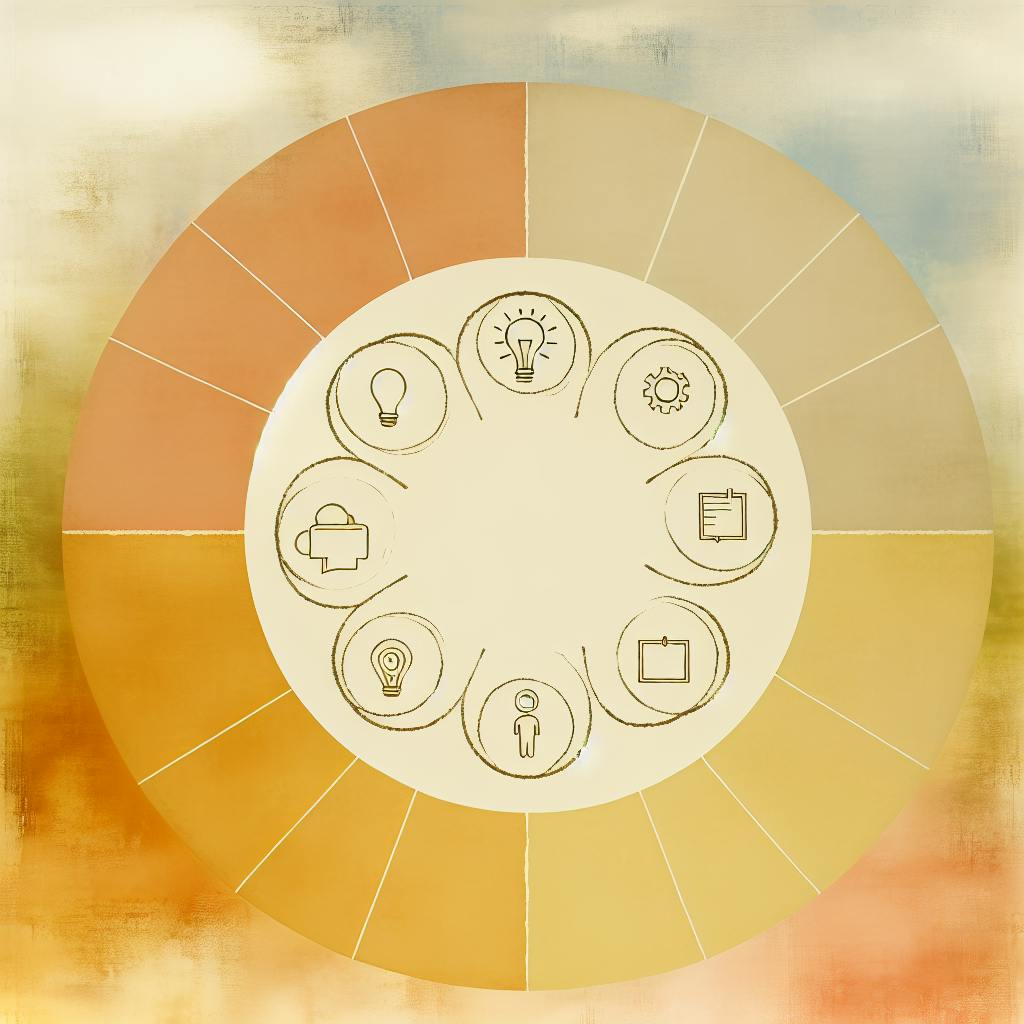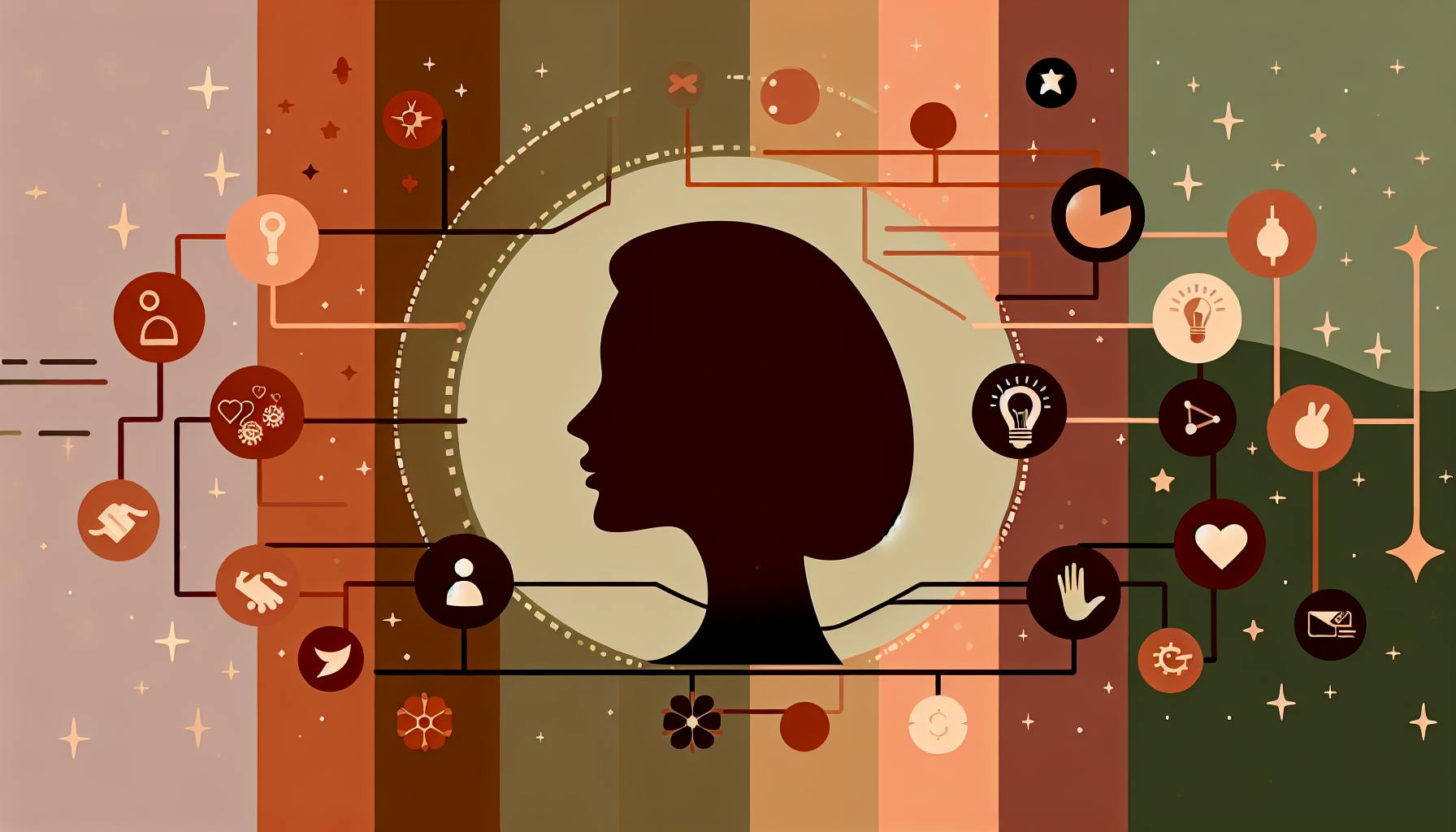If you're aiming to create exclusive video content that truly resonates, focusing on authentic storytelling is key. Here's a succinct guide to help you engage and connect with your audience:
- Be Genuine: Share real stories and experiences to build trust.
- Know Your Purpose: Clearly define why you're making your video and who it's for.
- Choose the Right Tools: Use platforms that offer creative freedom and allow you to maintain content ownership.
- Incorporate Key Storytelling Elements: Develop relatable characters, a coherent plot, and convey powerful themes.
- Maintain Authenticity: Be transparent and interact with your community to strengthen connections.
- Showcase Behind-The-Scenes Content: Let viewers see the real work behind your brand.
- Pick the Right Video Format: From testimonials to live videos, choose the format that best fits your story.
- Test and Optimize: Use feedback and analytics to improve your content.
By adhering to these principles, you can create engaging and meaningful video content that stands out. Remember, the key is to be yourself and share your genuine stories.
Step 1: Define Your Story's Purpose
Before you start making your video, it's super important to know why you're making it. Ask yourself some key questions to get clear on a few things:
-
What's the main point of your video? Think hard about the main idea or feeling you want to share with people who watch it. This is the core of your story.
-
Who are you making this video for? Understand who you want to watch your video. Think about their age, what they like, and what's important to them. This helps you make a video that they'll really connect with.
-
What do you hope will happen after people watch your video? Decide what you want viewers to think, feel, or do once they've seen your video. Maybe you want to teach them something, get them to take action, or just make them feel good.
Knowing the purpose of your video, who it's for, and what you want it to achieve helps you stay true to what you want to say. It makes sure your video feels real and hits the mark with your audience. Keep these things in mind as you put your video together, so everything you do and say in the video matches up with your main goal.
Step 2: Select the Right Tools and Platforms
Picking the best tools and places to share your real-life stories in videos is super important. The tools you choose affect how freely you can tell your story, plus how much control you have over your content and who sees it.
When choosing tools and platforms, think about:
Creative Freedom
Find tools that let you:
- Edit your video just the way you want
- Change visuals, sound, and effects to match your style
- Include extra clips like behind-the-scenes or funny mistakes
This helps you make videos that truly show off your unique way of telling stories.
Content Ownership
Go for platforms that allow you to:
- Keep the rights and earnings from your content
- Directly connect with your viewers
- Not worry about being hidden or losing money because of platform rules
This way, you're in charge of your videos and the money you make from them.
Audience Engagement
Choose platforms that help you:
- Hear what your viewers think
- Share special content with your biggest fans
- Create a real community
This makes your connection with people watching stronger, especially those who love real stories.
Recommended Tools
Platforms like TapeReal give creators a lot of freedom and control for sharing true stories. It has tools for making your profile your own, ways to chat with your community, and lets you manage how you make money.
YouTube is also great for reaching a lot of people and letting your creativity flow. But sometimes, its rules can make it hard for everyone to see your videos or earn from them. Using YouTube along with platforms like TapeReal can give you the best mix.
All in all, think carefully about what each tool and platform offers for sharing your authentic content and building relationships with your audience. The right choices will help your true stories stand out.
Step 3: Incorporate Key Storytelling Elements
To make your videos really grab people, it's smart to use some key storytelling parts. These pieces help you tell a story that pulls viewers in.
Develop Relatable Characters
Your story's people, whether it's you, someone you know, or made-up characters, should feel real to your viewers. Show their background, what drives them, their mistakes, and how they change. This makes viewers care about what happens to them.
Say you're telling your own story of trying to get noticed as a creator. People might see themselves in your struggle and cheer for you.
Structure a Coherent Plot
A good story has a clear path with a start, middle, and end. Start by introducing the main folks and the big problem they need to solve. Then, show how things get more intense, leading up to a big moment where they face the problem. End by showing what happens after and how everyone has changed.
For a creator's journey, you might talk about early doubts, a moment that changed everything, and finally finding your own voice.
Convey Powerful Themes
Your story should touch on big ideas that mean something to everyone. Talking about not giving up, finding yourself, feeling like you belong, or beating fear can really move people.
Sharing how you worked to be a full-time creator could highlight not giving up on what you believe in.
Use Impactful Imagery
Pick images and video clips that add to your story. Using visuals that symbolize bigger ideas can make your message stronger.
If you're showing how you kept going even when it was tough, clips of you working through setbacks can make your point clear.
Incorporate Emotional Arcs
Let the people in your story feel things deeply, just like in real life. Put them through challenges that make viewers feel for them. Show how they grow from what they go through.
Telling about your ups and downs but also the small victories can make viewers feel connected to you, rooting for your success.
By adding these important parts to your behind-the-scenes videos, you tell real stories that create strong bonds with your viewers.
Step 4: Maintain Authenticity
Keeping it real with your videos is key to making sure people trust you and want to keep watching. Here are some simple ways to do that:
Be Transparent
Let your viewers see what goes on behind the scenes. Show them how you make your videos, talk about what didn't work out, and explain why you made certain choices.
- Share clips of you setting up, planning, or editing
- Be open about ideas that didn't make the cut
- Talk about why you chose to do things a certain way
This helps people feel like they're getting to know the real you.
Keep it Consistent
Make sure your videos feel like they're all coming from the same person, no matter where people watch them.
- Let your own style and personality show
- Use the same kind of language and messages your fans know
- Don't change up your style or topics suddenly without saying why
Staying true to yourself makes your videos feel more genuine.
Interact With Your Community
Talk back to your viewers in the comments, ask them questions, and chat about what they're interested in. This shows you really care about them.
- Answer their questions and talk about their concerns
- Ask them what they'd like to see next
- Get their thoughts on new video ideas
When viewers see you talking with them, they feel like part of the conversation.
Share Your Genuine Self
Be open about your own life, what you believe, and how you feel.
- Share stories about your life and what's important to you
- Be real about the tough stuff and mistakes
Letting people see the real you helps build a strong connection.
By doing these things, your videos will feel honest and real, making people more likely to watch and get involved in what you're doing.
sbb-itb-bc761f5
Step 5: Showcase Behind-the-Scenes Content
Behind-the-scenes (BTS) videos let people see what happens inside a brand. They show real workers, events, and how things are made, helping viewers feel closer to the brand.
Here are a few brands that do a great job with BTS videos:
Warby Parker
Warby Parker shares videos on Instagram that show what it's like in their stores and the experiences of their employees. For example, they posted a video of influencer Katie Duke trying on glasses, which shows how personal their service is. This kind of real, unscripted look at shopping makes people relate more to the brand.
Feelgrounds
This shoe company shares videos on Instagram that show how their shoes are made and their efforts to waste less. By showing the real work happening in their factories, Feelgrounds proves its commitment to being eco-friendly.
Terre Bleu
Terre Bleu, a lavender farm, uses TikTok to show what they do every day, like planting and making oil. These videos teach people about farming in a small, ethical way and help Terre Bleu connect with those who care about the planet.
HelloFresh
HelloFresh has a series on YouTube where they take viewers into their test kitchen. They share short videos about how they come up with recipes, choose ingredients, and check for quality. Seeing how much care goes into their meals makes people trust HelloFresh more.
Key Takeaways
Letting people see the real behind-the-scenes action makes a brand feel more human and builds emotional connections. But, it's important to keep the videos real and unfiltered. Focus on showing the people, culture, and how things are made rather than just talking about products. The more honest and open the video, the better it connects.
As these examples show, there are many ways to do BTS videos. Whether it's through working with influencers, sharing on social media, or making a video series, the key is to give an honest look inside. For anyone wanting their viewers to really get to know them, BTS videos are a great way to do it.
Step 6: Choose the Right Video Format
Picking the right kind of video can really help when you're trying to share true stories. Some types of videos are just better at showing the real you or what goes on behind the camera.
Here are a few types of videos you might want to think about:
Testimonials
Testimonials are videos where your fans talk about how much they like your work. It's like having your viewers tell others why they should watch your videos too.
When to use:
- You want people to hear straight from others who enjoy your content.
- You're looking for a way to show that your videos mean a lot to your viewers.
Example ideas:
- Fans talking about a specific way your videos have helped them.
- Viewers explaining why they feel connected to your video community.
Vlogs
Vlogs are like video diaries where you talk directly to your audience about anything - what you're doing, thinking, or planning. It's a relaxed way to let fans into your life.
When to use:
- You're aiming to create a closer bond by letting viewers into your personal or work life.
- You're sharing what goes on during special events or behind the scenes.
Example ideas:
- Showing what a typical day looks like for you.
- Sharing insights from a recent experience or event.
Behind-the-Scenes
Behind-the-scenes videos offer a sneak peek into how you make your content, run your business, or what happens at events. It's all about showing the real work that goes into what you do.
When to use:
- You want to be open about how you create your content or run your business.
- Your viewers are curious about your creative process.
Example ideas:
- Sharing outtakes or funny moments that didn't make it into your main videos.
- Giving a tour of where you work or the tools you use.
Live Videos
Live videos let you broadcast what you're doing right then and there. It could be working, talking to fans, or just hanging out. It's all about being in the moment with your viewers.
When to use:
- You're looking for a way to let viewers join you for live events or see your process as it happens.
- You want to share your thoughts on the spot without editing.
Example ideas:
- Streaming while you're editing a new video.
- Going live at a big event or gathering.
Each type of video has its own way of making your stories feel more real. Try out different ones to see which works best for telling your unique stories. Remember, the more genuine and unscripted your video feels, the more it will resonate with people who love authentic content.
Step 7: Test and Optimize
Making sure your behind-the-scenes and special videos really hit the mark means you've got to try things out, see what people think, and make changes based on what you find out. It's all about getting better at matching what you do with what your viewers like.
Gather Feedback
After you make a video, ask different people - friends, fans, even critics - what they think. Find out:
- Which parts did they really like?
- When did they lose interest?
- Is there anything that was confusing or could be better?
Feedback is super helpful for making your videos better. Pay extra attention to the bits people loved and the parts where they got bored.
Analyze Metrics
Tools like YouTube Analytics and social media insights give you numbers on how your videos are doing. Look at:
- How many people watched
- How long they watched
- Likes and comments
- Where viewers came from
- Who's watching (like their age and where they're from)
These numbers show you what's working and what's not. Compare different videos to see what gets people excited and where they stop watching.
Optimize Content
With feedback and numbers in hand, you can make your videos even better. Here's how:
Make your storytelling better:
- Change the speed or length of scenes based on how long people watch
- Focus on parts that people really liked
- Fix parts that didn't do so well
Make it look and sound better:
- Check the sound and picture quality
- Use cool graphics or text to make points stand out
- Smooth out how the video starts and ends, and how it moves from one part to the next
Help people find and enjoy your videos:
- Use clear titles, descriptions, and tags
- Add subtitles in different languages
- Put your videos on different sites
Try new things:
- Make short previews or longer versions with extra comments
- Think about related videos, like sequels or spin-offs
Testing and making changes is hard work, but it helps your true stories reach more people. Stay flexible, keep what works, fix what doesn't, and always think of new ways to share. Your honest content will really make an impact.
Conclusion
When you share your true stories in videos, it's a great way to connect with people who watch them. Being honest, clear, and consistent helps you build a strong relationship with your audience.
Here's a quick guide to make sure your videos really speak to people:
- First, know why you're making your video and who you want to watch it.
- Choose tools that let you be creative and keep control over your videos.
- Make sure your videos have characters people can relate to, themes that matter, and show real emotions.
- Don't be afraid to show the real you. Share what you think, how you feel, and what your day is like.
- Let people see how you make your videos.
- Try out different kinds of videos to see what fits your story best.
- Listen to what people say about your videos, look at the numbers to see how they're doing, and always try to make them better.
Just be yourself and stick to what you believe in. That's what keeps people interested. With the right approach, your honest stories and videos can really make a difference to those who watch them. Keep an open mind, be ready to change things up, and most importantly, keep things real. Your community will grow because they see you as genuine and down-to-earth.



